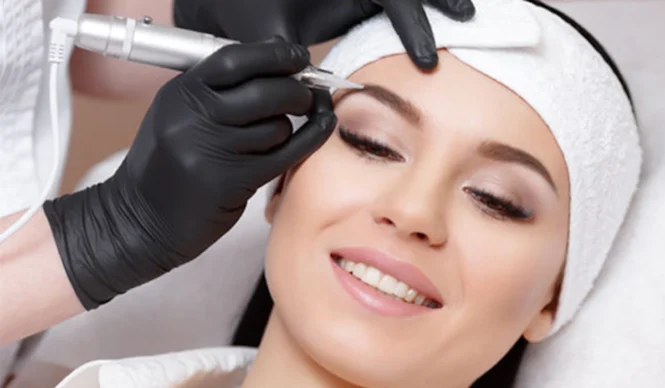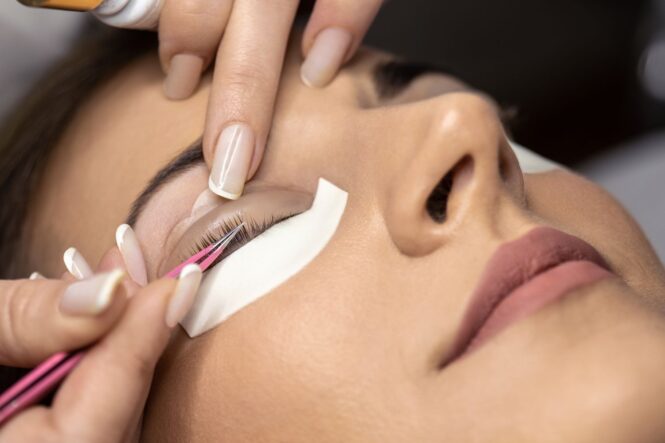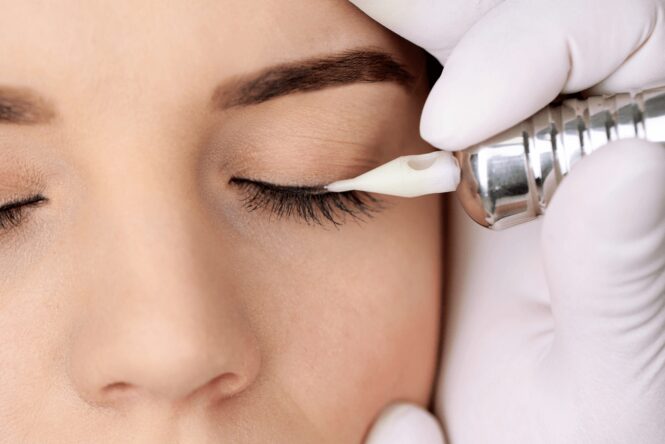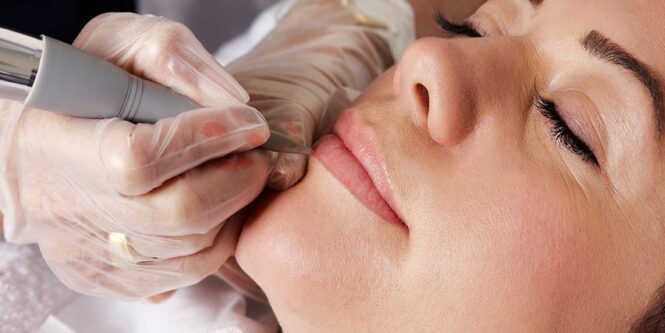Permanent makeup has experienced a boom in recent years. More and more people are looking for a permanent solution for their eyebrows, lips, or eyeliner to save time and effort in their daily makeup routine. However, not everyone can perform this technique perfectly. Comprehensive and high-quality training is therefore essential to be able to work successfully in the field of permanent makeup.
In this article, we will look at permanent makeup training basics and the most important aspects to consider.
What exactly is permanent makeup?

Permanent makeup, also known as cosmetic tattooing or micro-pigmentation, is a method of applying pigment to the skin to enhance or mimic the appearance of traditional makeup. This can include eyebrows, eyeliner, lip liner, and even full lip color. The procedure involves the use of a needle and ink to create the desired look, and the results can last anywhere from a few years to a lifetime.
Permanent makeup can be a great option for those who have trouble applying traditional makeup, have sensitive skin, or simply want a more convenient and low-maintenance beauty routine. Nevertheless, it’s important to note that there can be risks involved and it’s important to do thorough research and choose a qualified and experienced professional before undergoing the procedure.
Who can become a permanent makeup artist?
Becoming a permanent makeup artist is a rewarding career choice for those with a passion for beauty and a desire to help others enhance their natural features. Anyone with an artistic eye and a steady hand can become a permanent makeup artist if they have the proper training and certifications. Many makeup artists start their careers by attending a cosmetology school or a specialized permanent makeup training program such as the MAJ-Permanent Make Up Academy. These programs offer hands-on training in the latest techniques and technologies, as well as the opportunity to work with real clients.
Some countries or states also require a license to practice as a permanent makeup artist, which can be obtained through passing a written exam and completing a certain number of hours of practical training. With the right training and mindset, anyone can become a successful permanent makeup artist and help others feel confident and beautiful.
What is being taught at the basic training?

Permanent make-up training is a growing field that involves the use of specialized techniques to apply pigments to the skin to mimic the appearance of makeup. However, it can also include applying pigment to the scalp to restore the hairline. This kind of treatment can help, for example, cancer patients or other customers suffering from hair loss.
Basic training for permanent make-up generally covers the following areas:
- sanitation and sterilization,
- color theory,
- pigments and equipment,
- skin anatomy and physiology,
- and the proper technique for performing the procedure.
Additionally, trainees will learn how to create natural-looking eyebrows, eyeliner, and lip liner, as well as how to correct mistakes and tattoo removal using a plasma pen. It’s important to note that a good training program should also include hands-on practice on live models and ongoing support after training is completed to help the artist build a successful business.
Permanent makeup training – theoretical part
The theoretical part of the training is a crucial component in understanding the basic principles of permanent makeup, as well as the safety and hygiene protocols that must be followed. Students will learn about the different types of pigments, needles, and equipment that are used in the process, as well as the different techniques that can be used to create different effects.
Additionally, the theoretical part of the training will cover the anatomy and physiology of the skin, including the different layers and the various skin types. This knowledge will help students understand how to work with different skin tones and textures, and how to avoid potential complications. Overall, the theoretical part of the training provides a solid foundation for anyone looking to become a permanent makeup artist.
Permanent makeup training – practical part

The practical part of the training allows students to develop their skills and gain hands-on experience. Practical training usually includes working on live models, which is a great way for students to get used to working with real clients. They will learn how to create different looks, such as eyeliner, lip liner, and eyebrows, and how to use the equipment safely and effectively.
Practical training also includes learning how to work with real models and their different skin types and how to handle any complications that may arise. This hands-on experience is vital for students to be able to apply their knowledge in real-life situations and become confident and successful in their future careers.
Permanent makeup training – exam
Permanent makeup training is a rigorous process that requires a significant investment of time and money. One of the most important aspects of this training is the exam, which assesses the student’s knowledge and skills in the field. The exam typically covers topics the students learned during the training such as sanitation and sterilization, color theory, and the proper application of permanent makeup. The exam may also include a practical component, where students must demonstrate their abilities by applying makeup to live models.
Passing the exam is essential for individuals who wish to become licensed and work as permanent makeup artists. It is a challenging test, but with the right training and preparation, students can feel confident and well-equipped to pass and start their careers in the field.
Conclusion

Permanent makeup basic training is an essential step for anyone looking to enter the field of cosmetic tattooing. It provides a solid foundation of knowledge and skills that are essential for success in this industry. The training covers various techniques, such as machine work and manual methods, as well as the latest safety and sanitation practices. The course also includes hands-on practice with live models, allowing students to develop their skills under the guidance of experienced instructors. Upon completion of the training, students should have a solid understanding of the industry and be well-prepared to enter the workforce as professional permanent makeup artists. Overall, permanent makeup basic training is an investment in one’s career that will pay off in the long run.
 Imagup General Magazine 2024
Imagup General Magazine 2024



